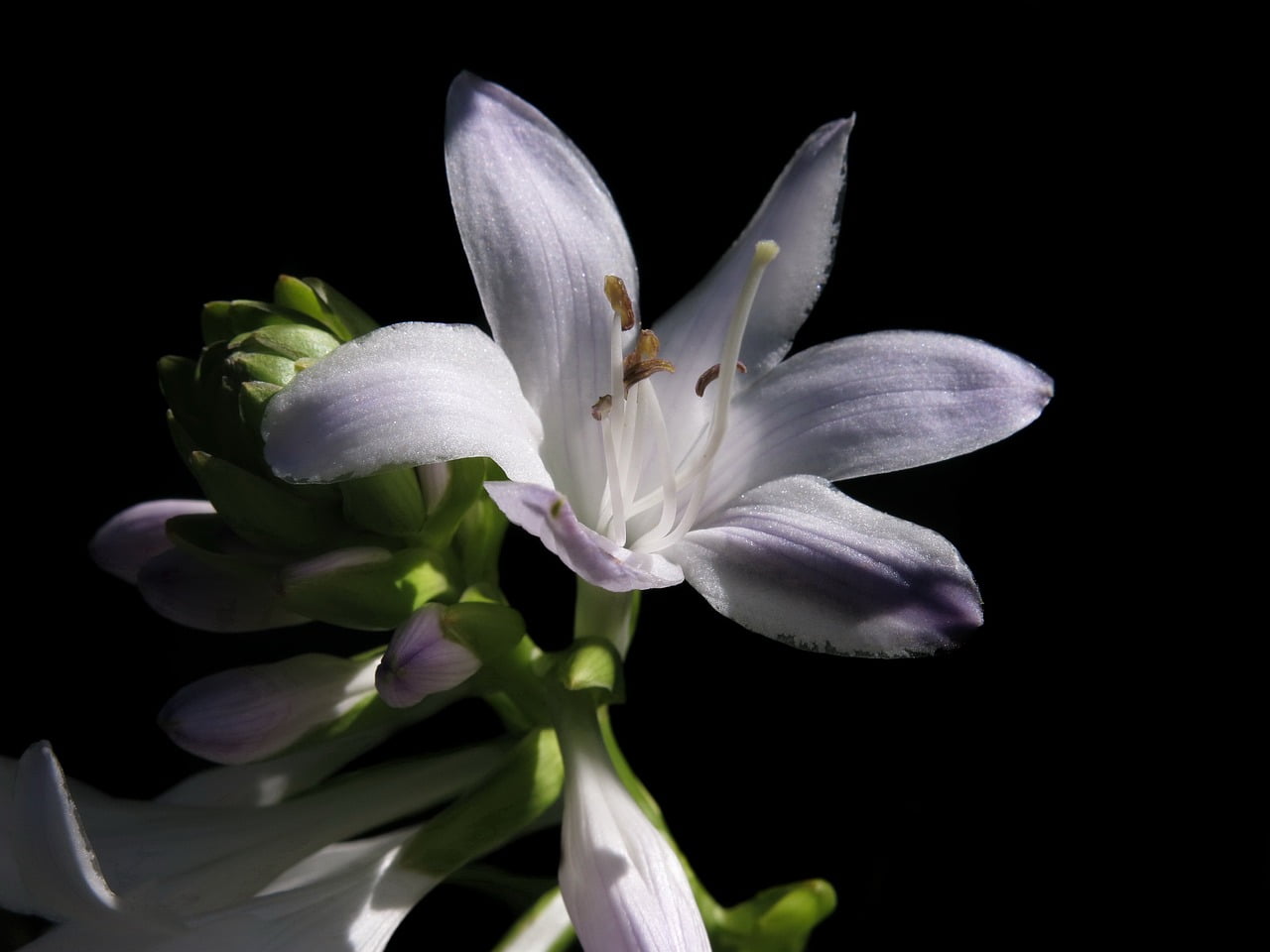
Understanding Hosta Plants
Hosta Planting, scientifically known as Hosta spp., are beloved for their lush and vibrant foliage, which adds elegance and charm to gardens, walkways, and shaded areas. These herbaceous perennials are native to East Asia and are commonly referred to as “plantain lilies” due to the shape of their leaves. Hostas have become a staple in gardens worldwide because of their adaptability and aesthetic appeal.
Varieties of Hosta
Hostas come in a wide array of varieties, each with its own unique characteristics. Some of the most popular varieties include:
- Hosta ‘Blue Angel’: Known for its striking blue-green leaves, this Hosta variety thrives in partial to full shade.
- Hosta ‘Sum and Substance’: Recognized for its large, chartreuse-yellow leaves, it’s a standout in shade gardens.
- Hosta ‘Patriot’: Featuring deep green leaves with creamy-white margins, this variety offers a touch of elegance to any garden.
- Hosta ‘Mini Skirt’: A petite Hosta with small, dark green leaves, perfect for edging or container gardening.
- Hosta ‘Halcyon’: This Hosta has intense blue foliage and is prized for its resilience in varying light conditions.
Selecting the Perfect Spot for Planting
Choosing the right location for your Hosta plants is crucial to their success. Hostas are shade-loving plants, but they have varying light requirements:
- Full Shade: Some Hosta varieties, like ‘Blue Angel’ and ‘Sum and Substance,’ thrive in areas with minimal direct sunlight. These are perfect for the darkest corners of your garden.
- Partial Shade: Hostas in this category, such as ‘Patriot’ and ‘Mini Skirt,’ can tolerate a bit of morning sun but prefer afternoon shade.
- Filtered Sun: A few Hosta varieties can handle dappled sunlight. If you have a spot with a mix of light and shade, consider varieties like ‘Halcyon.’
Preparing the Soil
Hostas prefer well-drained soil that retains moisture without becoming waterlogged. To prepare your soil for planting:
- Test the Soil: Conduct a soil test to determine its pH level. Hostas thrive in slightly acidic soil, typically with a pH of 6.0 to 6.5.
- Amend the Soil: If your soil is too alkaline, add organic matter like compost or peat moss to lower the pH.
- Improve Drainage: Ensure that the planting area has proper drainage to prevent waterlogged soil, which can lead to root rot.
Planting Hostas: Step by Step
Now, let’s break down the planting process into easy-to-follow steps:
1. Site Preparation
Select the area in your garden that matches the light requirements of your chosen Hosta variety. Clear the area of any weeds and debris to create a clean slate for planting.
2. Digging the Hole
Dig a hole that’s about twice the size of the Hosta’s root ball. The depth should be enough to accommodate the roots comfortably.
3. Planting Depth
Place the Hosta in the hole with the top of the root ball level with the surrounding soil. Ensure that the crown of the plant is just at or slightly above the soil surface.
4. Soil Backfill
Carefully backfill the hole with soil, gently patting it down to remove air pockets. Water the newly planted Hosta thoroughly to help settle the soil.
5. Mulching
Apply a layer of mulch around the base of the Hosta. Mulch helps retain moisture, regulate soil temperature, and suppress weed growth.
Caring for Your Hostas
1. Watering
Hostas are thirsty plants, especially during the growing season. Keep the soil consistently moist but avoid overwatering, as this can lead to root issues.
2. Fertilization
Feed your Hostas with a balanced, slow-release fertilizer in the spring as new growth emerges. Follow the package instructions for the appropriate dosage.
3. Division
Hostas tend to become crowded over time, which can reduce their vitality. Divide mature plants every few years in the spring or fall to maintain their health and vigor.
4. Pest Control
Keep an eye out for common pests like slugs, snails, and deer, which can damage Hosta foliage. Use appropriate control methods, such as slug traps or deer repellents, to protect your plants.
Conclusion
Hosta plants are a wonderful addition to any garden, offering a wide range of colors, sizes, and textures to suit your landscaping needs. By following the tips and guidelines outlined in this comprehensive guide, you can enjoy the beauty and tranquility that Hostas bring to your outdoor space.
Now, go ahead and explore the world of Hostas, experiment with different varieties, and create a garden that showcases the splendor of these remarkable foliage plants.
FAQs
1. Can Hostas survive in full sun?
Hostas are primarily shade-loving plants, and while some varieties can tolerate partial sun, prolonged exposure to full sun can scorch their leaves. It’s best to plant them in shaded or partially shaded areas.
2. How do I protect my Hostas from deer?
To deter deer from munching on your Hostas, consider using deer-resistant plants as companions or using deer repellent sprays.
3. Can I grow Hostas in containers?
Yes, many Hosta varieties are well-suited for container gardening. Choose a large enough pot, ensure proper drainage, and use a high-quality potting mix.
4. Do Hostas attract pollinators?
While Hostas are not typically known for attracting pollinators like bees or butterflies, they do provide excellent ground cover and can enhance the overall biodiversity of your garden.
5. When is the best time to transplant Hostas?
The best times to transplant Hostas are in the spring as new growth begins or in the fall as they go dormant. Avoid transplanting during the hot summer months to minimize stress on the plants.